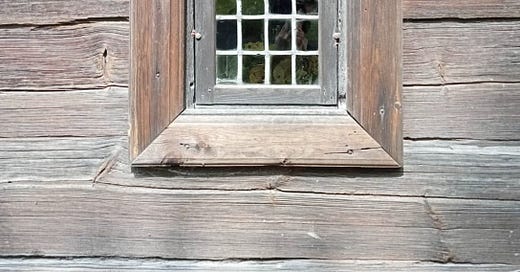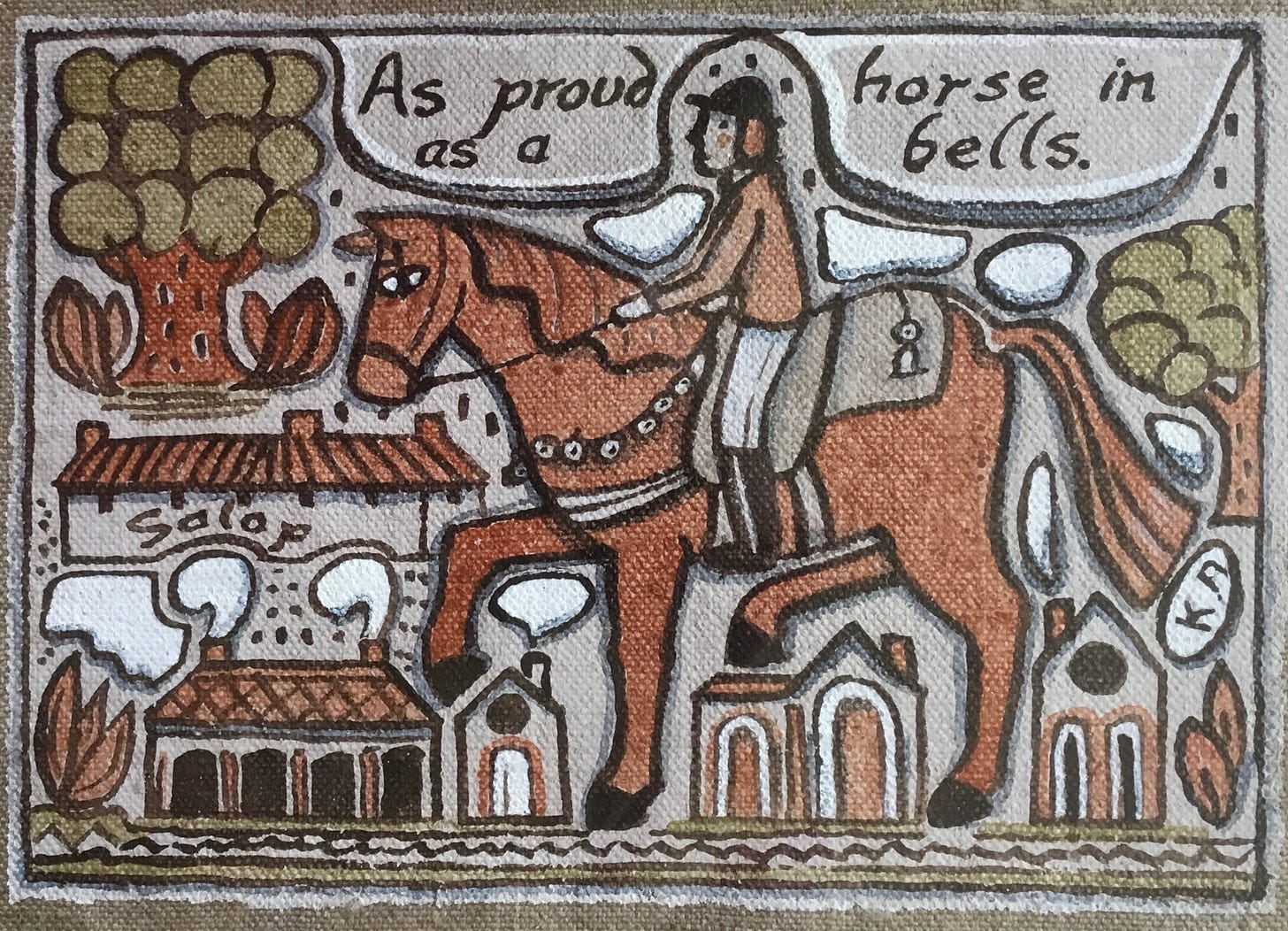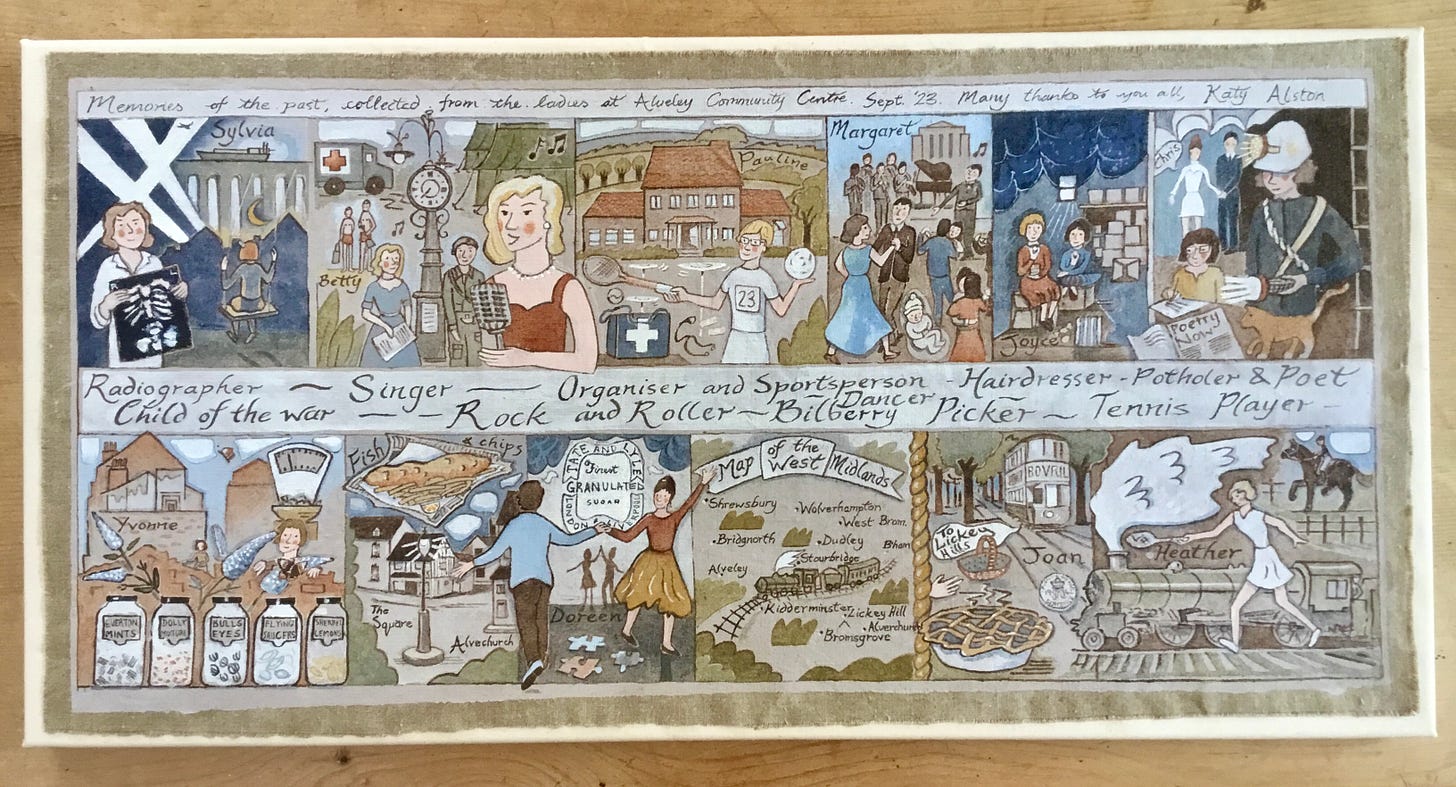Egg tempera and Bonadsmålning aka Southern Swedish Folk Art Paintings
An historical painting post about the old Swedish painters and more.
The scene…
Imagine a Southern Swedish home in 1750, it’s made of wood which darkened with age, the winter in Sweden is long and the evenings would seem even longer without artificial light. Times were hard, there had been wars with Denmark, Poland and Russia, famines and the plague was everywhere, and now your house is reflecting the gloom!
Painters to the rescue!
Painters travelled through Southern Sweden (in the case of Bonadsmålning) creating paintings on linen to brighten up people's homes, particularly for festivities such as Christmas and weddings. They used well known stories from folklore or from the bible to create painted scenes, often using templates to deliver a series of stock images.
They really do cheer up the room! After seeing some of them this year in Stockholm in the Skansen museum, and even without accounting for the fading of the colours and lack of brightness that age has wrought upon them, it really would have made a massive difference to the room. (Carl Larsson featured them as a smaller decorative traditional frieze around the room in the 1880's and recorded them in his interior paintings of the time.)


These paintings gained in popularity hitting a peak in the 1700's and 1800's. The painters each again had their own recipes and pigments; some light has been shone on the subject by Ingalill Nyström, who investigated the subject for her PhD in 2012, and using lots of high tech non invasive investigative procedures discovered not surprisingly that inexpensive pigments would have been used extensively, such as chalk, ochres, carbon blacks and woad. Later more artificial pigments were incorporated such as emerald green. The binding material was usually egg but could also be flour and water and the support was usually re used linens, for example really quite coarse sacks coated with glue such as hide glue.
The paint is made in the same way as normal egg tempera paint I described in the last post just made more thickly, it feels more like a very smooth poster paint!
Later they made use of paper as a support too. It’s an interesting point that although they used to roll some of these paintings, they didn’t seem to crack too much!
In my arts council project I featured some of the images they used, whilst transporting them to the UK, so my horses feature crossing the Clun bridge for example. (From the three horsemen/ three wise men pictorial device) I was exploring the techniques, the elements, the pigments and the stories they used. To find out more, I did a workshop with Sue Prince who is a fantastic folk artist and illustrator working in Derbyshire. Sue became involved with creating and teaching Swedish Bonadsmålning in Sweden. She incorporates the traditional elements of the paintings into her modern day paintings, have a look at her work. She also works as an illustrator making maps amongst other things! We had a lovely mapmaking Bonadsmålning discussion day!
https://sueprinceartist.co.uk
There are lots more pictures online especially here:
https://digitaltmuseum.se/021028379040/bonadsmalning
What drew me to the subject besides trying to find out how the painting literally 'hung together' was the cross over between history and art, especially when the history is literally embedded in the art! It’s about an art form that didn’t need galleries, was made by everyday people - a lot of the painters had no art education, they just improved as they went along , a great life lesson in that if you want to improve at something you just do it more! Don’t wait for talent to strike!
When I mention egg tempera to people, the ones who don’t start talking about cookery, express their worries that egg tempera is such a specialist field, that you have to be so careful about how it’s created and the worry that as it’s made from natural materials so it might disintegrate!
If you then think of these Swedish paintings that have lasted centuries, been rolled, survived smoke, insect attack you begin to realise that maybe it IS a natural, environmentally sound, incredibly hard wearing and long lasting material!
Also as part of the Arts Council project I worked with Age UK to create a Bonadsmålning of the lives of some folk near Bridgnorth, I interviewed them and incorporated them into a bigger picture whilst relying on the old Swedish painters compositional devices, palettes and layouts. It was a lovely project, they all got to know each other really well! They enjoyed using the paint, and said it was lovely to paint with!
In another post I will explain how I learned to use the medium of egg tempera in the more traditional way.










Your work is just so lovely and so meaningful!!! Fantastic!!
It is so interesting to learn more about the history behind the artwork that you created, Katy. Sounds like it was a very enjoyable research trip to Sweden!